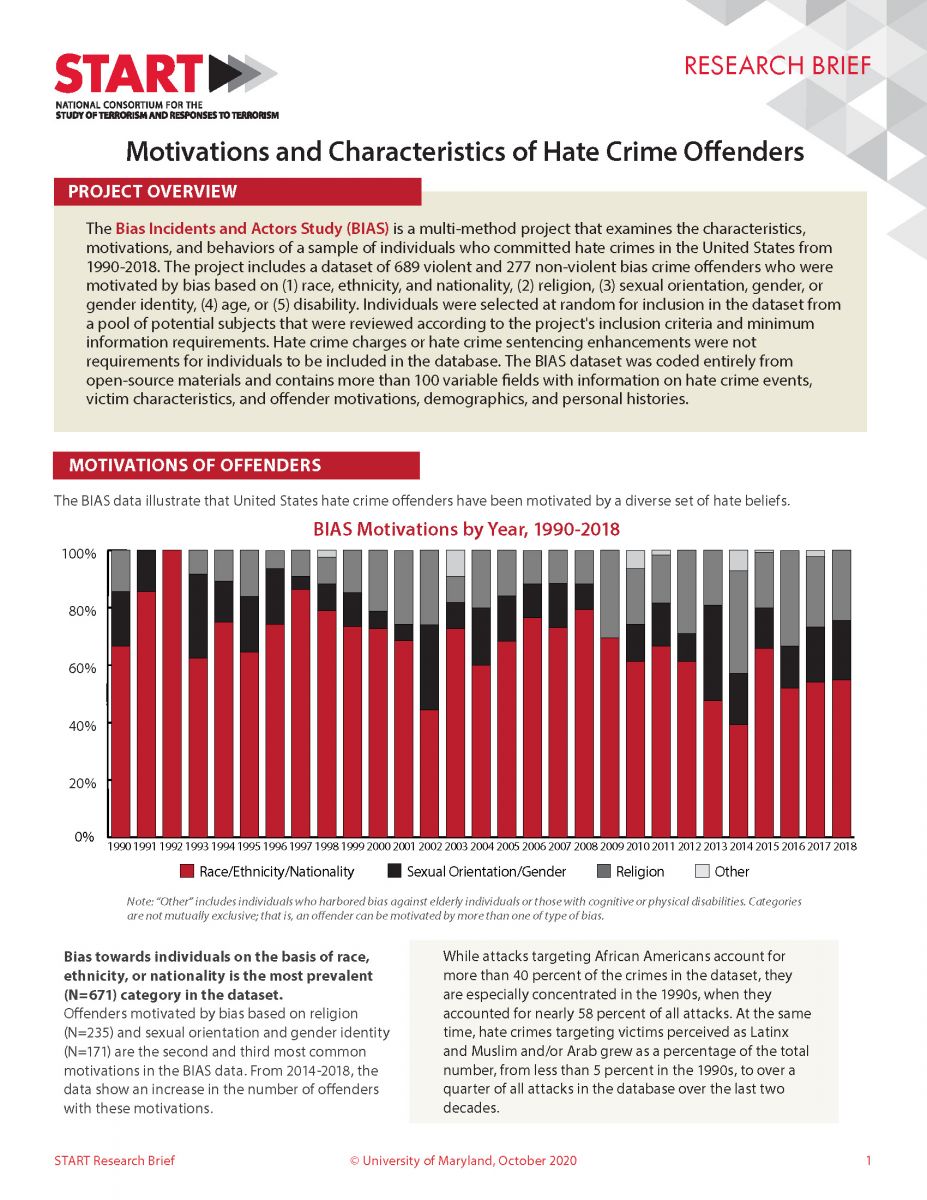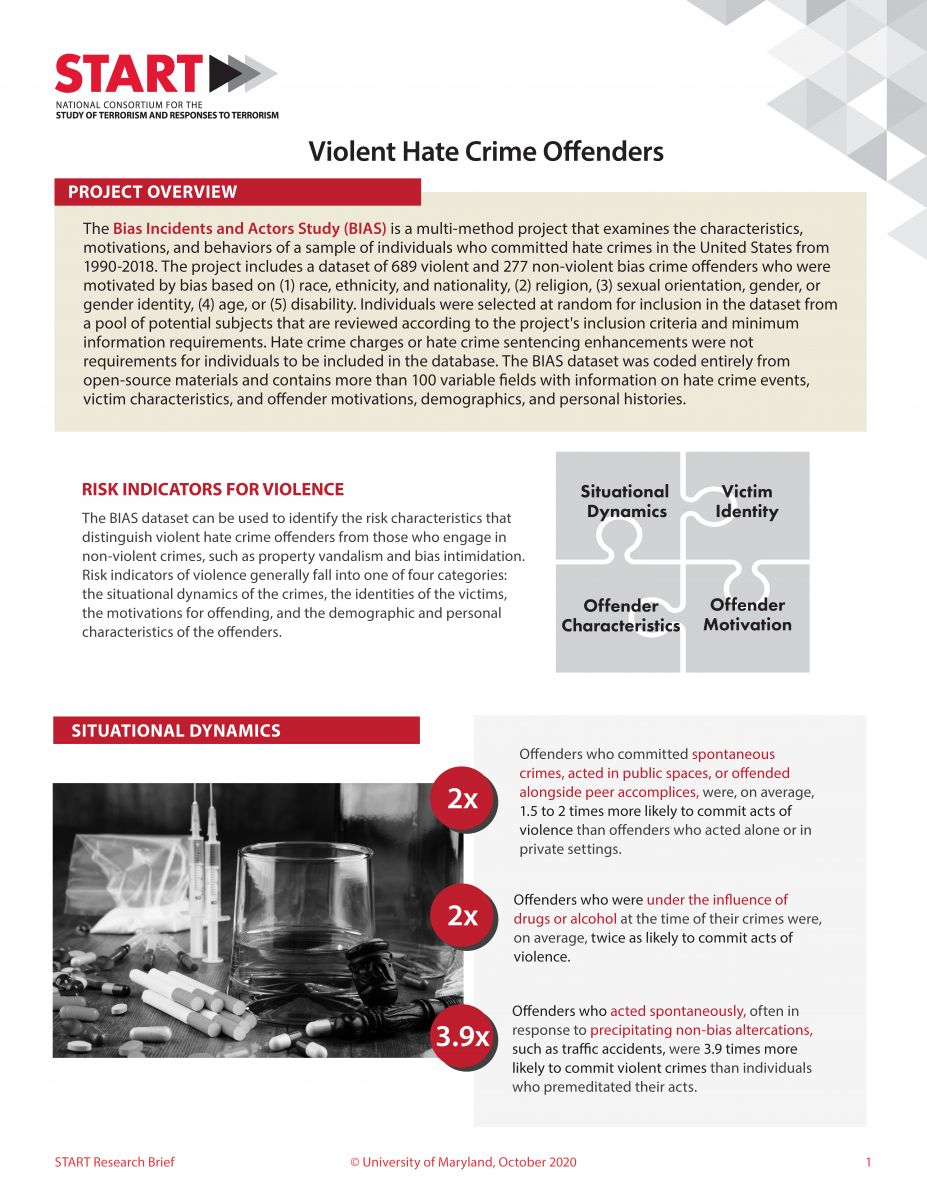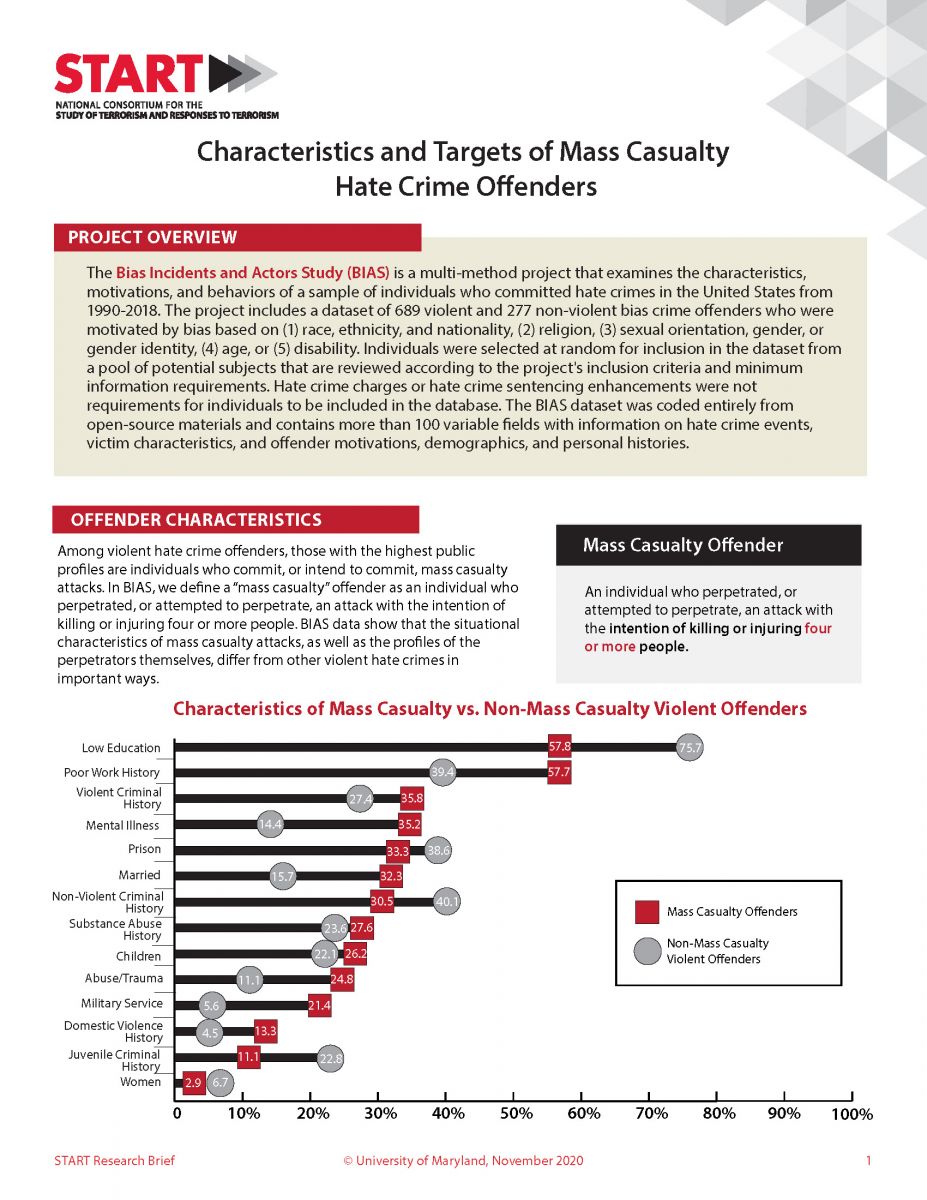Project Details
While research on bias crime has grown considerably since the passing of the Hate Crime Statistics Act of 1990, comparatively little has been written about the criminal trajectories and pathways of bias crime offenders. This research gap stems in large part from two data related issues and one conceptual issue. First, the only national data on bias crimes, the Uniform Crime Reporting (UCR) program, provide extremely limited information on offenders. The UCR does not allow researchers to determine how individuals are mobilized to commit bias crimes, or to identify the background characteristics and life-course events that constitute offender pathways. In response, researchers have turned to local police records, but these data often over-represent certain offender types and cannot be used to produce widely generalizable research findings. Second, data limitations have forced researchers to aggregate offender types and assume that there is a single pathway to offending, an assumption which runs counter to the findings of analyses in cognate research areas, such as gang involvement and violent extremism. And finally, most research on bias crime offenders has relied on inductive methods, which have been used to identify crime correlates, but have not contributed to a general understanding of the causal processes of offending.
This project seeks to advance the study of bias crimes by building on the lessons we have learned from a series of NIJ-funded projects called Profiles of Individual Radicalization (PIRUS). Based on the PIRUS model our research team will construct a database of 1,000 convicted bias crime offenders that is both national in scope and representative of multiple offender types. The dataset will include detailed information on offender demographics, socioeconomic measures, social relationships, and other life-course variables that may contribute to the formation of hate beliefs and the commission of bias crimes. Once complete, researchers will use a suite of multivariate statistical methods and fuzzy-set/Qualitative Comparative Analysis to assess the critical differences that exist within offender types and to identify the causal conjunctions that act as pathways to bias crime offending. The overarching goal of this project is to significantly advance knowledge of the pathways to bias crime by moving past static typologies and correlates to embrace social science methods designed to handle complexity. Once complete, we propose to disseminate key findings to parties of interest and leverage START’s unique transition capabilities to develop tools to train and educate key stakeholders, including law enforcement and community practitioners.
 |
Motivations and Characteristics of Hate Crime Offenders (Research Brief) The BIAS data illustrate that United States hate crime offenders have been motivated by a diverse set of hate beliefs. Bias towards individuals on the basis of race, ethnicity, or nationality is the most prevalent (N=671) category in the dataset. Offenders motivated by bias based on religion (N=235) and sexual orientation and gender identity (N=171) are the second and third most common motivations in the BIAS data. From 2014-2018, the data show an increase in the number of offenders with these motivations. |
 |
Violent Hate Crime Offenders (Research Brief) The BIAS dataset can be used to identify the risk characteristics that distinguish violent hate crime offenders from those who engage in non-violent crimes, such as property vandalism and bias intimidation. Risk indicators of violence generally fall into one of four categories: the situational dynamics of the crimes, the identities of the victims, the motivations for offending, and the demographic and personal characteristics of the offenders. |
 |
Characteristics and Targets of Mass Casualty Hate Crime Offenders (Research Brief) This research brief examines mass casualty hate crime offenders. Among violent hate crime offenders, those with the highest public profiles are individuals who commit, or intend to commit, mass casualty attacks. In BIAS, we identify a “mass casualty” offender as an individual who perpetrated, or attempted to perpetrate, an attack with the intention of killing or injuring four or more people. BIAS data show that the situational characteristics of mass casualty attacks, as well as the pro‑files of the perpetrators themselves, differ from other violent hate crimes in important ways. |
Researchers will use a suite of multivariate statistical methods and fuzzy-set/Qualitative Comparative Analysis to assess the critical differences that exist within offender types and to identify the causal conjunctions that act as pathways to bias crime offending.
